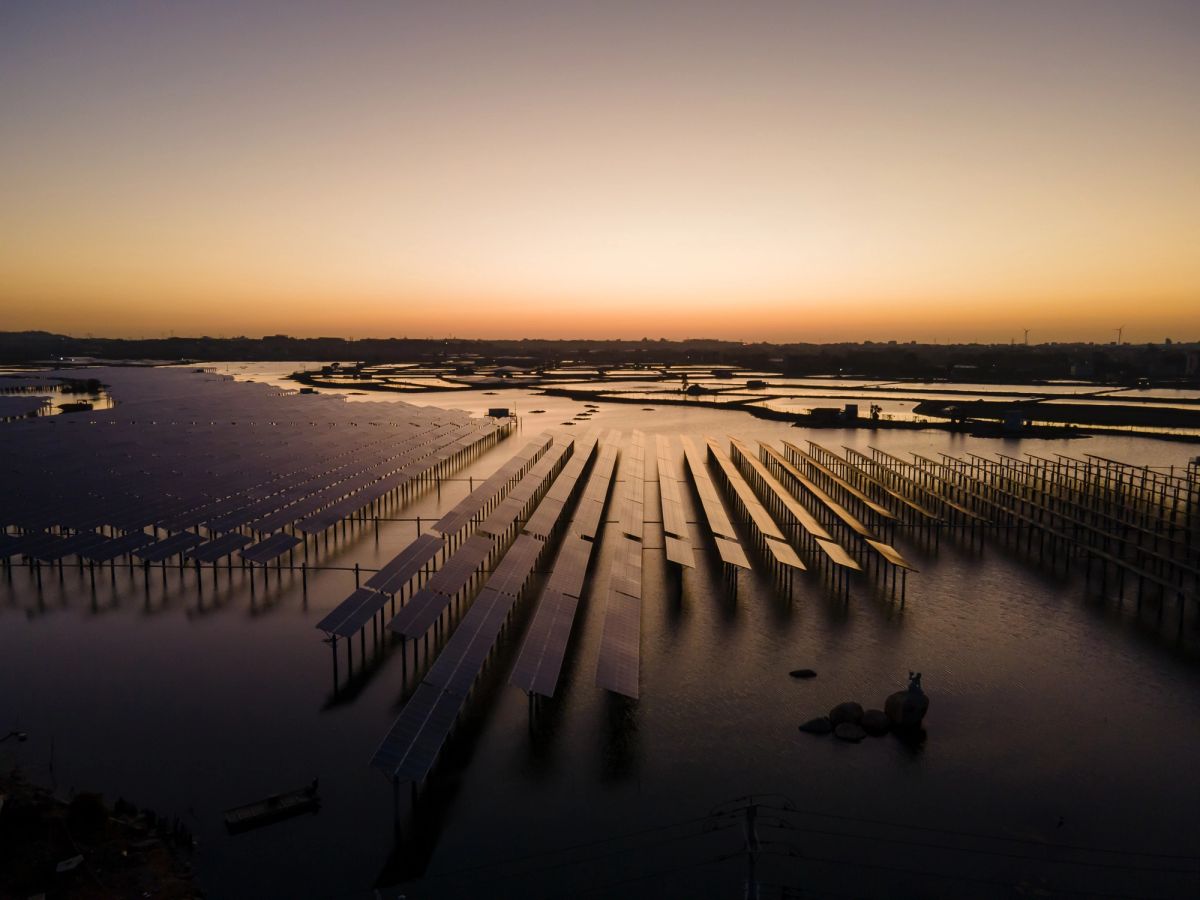What is Net Zero?
Net zero has become ubiquitous, but what exactly does it mean?
Net zero simply means balancing the carbon emitted into the atmosphere and the carbon removed from it. This balance will happen when the amount of carbon we add to the atmosphere is less than what is removed.
To reach net zero, emissions from homes, transport, agriculture, manufacturing, and other industries will need to be significantly reduced. But in some areas, aviation, for example, is simply not possible to remove emissions altogether.
These ‘residual’ emissions will need to be removed: either by changing how we use our land to absorb more carbon dioxide, such as planting more trees, or by extracting the emissions using technology known as carbon capture, usage, and storage.
SBTi’s Net-Zero Standard
The SBTi ’s Net-Zero Standard provides companies with the guidance and tools to set science-based net-zero targets.
With a clear blueprint for implementing net zero plans, businesses will be better positioned to tackle climate change.
The standard provides business leaders with much-needed clarity and confidence that their near- and long-term targets are aligned with climate science – helping to ensure a habitable planet for all.
What are scope 1, 2 and 3 carbon emissions?
There are protocols for how deep you can go to assess your greenhouse gas emissions. The approaches fall into one of three scopes, largely based on how directly you can control the emissions:
- Scope 1 offers the highest degree of control, such as burning coal or gas on-site and releasing emissions through a flue or chimney. The emitter owns the source and has complete control over whether the fuel is burned and creates emissions.
- Scope 2 encompasses grid electricity or off-site heating/cooling sources, including purchased electricity, steam, or heated/chilled water. Users can control the amount of energy consumed, but they do not control how the energy is produced or its emissions intensity.
- Scope 3 accounts for emissions with the least control or ownership. Examples include employee travel and commuting, vendor supply chain emissions, or embodied energy in building products.
How to calculate carbon emissions?
The simplest calculations fall into Scope 1 and 2 and this is therefore where most start. A ballpark estimate of your carbon footprint can be calculated by converting utility consumption of oil, gas and electricity into equivalent weight of carbon dioxide.
The Need for Net Zero
The science is clear: we stand on the precipice of disaster. It is now or never to avert climate catastrophe.
Each year the Intergovernmental Panel on Climate Change (IPCC) publishes a report detailing the impact of climate change and proposing solutions to mitigate it.
The reports stress “the need for urgent action”, reiterating that “without immediate and deep emissions reductions across all sectors, limiting global warming to 1.5°C is beyond reach.”
Businesses are Taking Action
So far, we have focused on various government responses to climate change; however, it is not just politicians who have embraced the net-zero 2050 initiative. Businesses have to.
Amazon has vowed to reach net-zero carbon emissions by 2040, a decade ahead of the Paris Climate Agreement, and is on track to power its operations with 100% renewable energy by 2025 as part of its goal. Apple, meanwhile, is committed to reaching 100 per cent carbon neutrality for its supply chain and products by 2030.
Some Companies with Net Zero Targets
- Amazon: Net zero by 2040
- JLL: Net zero by 2040
- Procter & Gamble: Net zero by 2040
- Novartis: Net zero by 2040
- Vodafone: Net zero by 2040
- AstraZeneca: Net zero by 2045
- Volkswagen: Net zero by 2050
- Nestlé: Net zero by 2050
- Oracle: Net zero by 2050
Net Zero Benefits for Businesses
Aside from helping to improve the world’s environment, adopting net zero strategies have a range of benefits for business, from helping their business grow, to saving money, and boosting business resilience.
1. Business Reputation
Adopting carbon-neutral practices may enhance your reputation as a brand.
The Carbon Trust found that consumers are increasingly interested in a business's sustainability credentials and expect companies to behave more ethically, especially concerning the environment.
What's more, consumers are willing to put their money where their mouth is. Studies by Deloitte have shown that 55% of consumers have chosen food and non-alcoholic beverage brands that have environmentally sustainable values and practices. The report also found that 32% of consumers were willing to pay more for goods and services if it ensured brands reduced their carbon footprint.
2. Reduced costs
Swapping your energy to renewable sources, such as solar panels, or simply switching to a green tariff, can significantly reduce your utility bills as a business. Examining how energy is used in your business may substantially reduce energy consumption and costs.
3. Attracting investment
Becoming a net zero business may be attractive for investors and shareholders looking to invest in companies with long-term sustainable business strategies.
4. Security and Resilience
Aiming for net zero can make small businesses more resilient against market or national disruptions.
For instance, electric vehicles may help protect your business from rising fuel costs and disruptions in fuel supply chains. Adopting alternative energy supplies such as solar or wind may also shield your business from hikes in energy prices. Learn everything you need to know about solar farms here.
Six Steps to Net Zero
1. Measure Yourself
What gets measured gets managed. Scopes 1 & 2 are what you create directly and what utilities you buy. Put in a system to monitor what you and what you consume and you can calculate your current carbon consumption.
2. Measure Your Suppliers
Under the protocol above, scope 3 emissions are the indirect ones. The use of your product or the carbon in the things you buy. It is the biggest part of your footprint but don’t be scared. It can be measured.
3. Set Targets
Now you have done some baseline, time to set some targets. The emerging gold standard for this is science-based targets ( SBTi ). This will give you targets to commit to reductions in scopes 1, 2 & 3.
4. Take Small Actions
Start with some no/low-cost measures. Reduce consumption, and increase efficiency. It is amazing once you start doing things right in step 1 what opportunities will emerge. Also do electrification of heat where you can.
5. Buy Smarter
Now you have reduced your consumption, you can buy what you do use from renewable sources. That can be directly from the grid or through a power purchase agreement.
6. Engage Supply Chain
Now that you are on the way yourself, have a chat with your suppliers to find out where your biggest supply chain emissions originate. Tell your suppliers what you have done.
It is starting to look a little easier, isn’t it?
Now you have done this, what does it mean?
- You can show you comply with regulations and save money on carbon and consumption.
- You can show your investors that you are taking the right actions to be a sustainable investment.
- You can show current and potential employees that you are a responsible employer.
- You can demonstrate your commitment to your customers.
A net zero future
The transition to net zero is not something that will happen in the distant future. It is happening now.
What's more, businesses are leading the way. They are not waiting for change to be mandated by governments and regulators. They will play a crucial role in delivering a net zero future.
Those that aren't should be. Doing so would leave them in a much better position to identify, shape, and invest in the already profitable propositions and the growth opportunities emerging in the future.
How can CoolPlanet help you achieve Net Zero?
Which of your processes consumes the most carbon? How much carbon from your suppliers is accountable to you? Your carbon accounting problem is a data problem. And we know how to solve it.
CoolPlanet works with some of the world’s biggest companies including GE Healthcare, Takeda, Dairy Farmers of America, Bulmers and Glanbia to help them measure and lower carbon emissions at speed, and at scale.
CoolPlanet’s decarbonisation management system - CoolPlanetOS - is built for the complexities of the world’s biggest companies. Using our in-house experts and bespoke decarbonisation software , we will map your company’s carbon footprint. CoolPlanetOS tracks all your electricity, water, CO2 and other key resources in one platform, and can analyse everything from individual machines to entire sites, across multiple locations and thousands of meter points, giving you the full picture of your carbon impact across your entire operations in real-time.
It's not enough to bring all your emissions data into one place and map out your carbon footprint. You need to be able to understand it. You need to know the best ways to reduce emissions, and where to start.
Decarbonisation doesn’t need to start with a multi-million-euro project spanning multiple sites. We tailor solutions to your company’s needs and your budget, focusing on cost-effective ways to lower energy consumption and carbon emissions. From improving energy efficiency and optimising processes to incorporating green energy and electrification, we can identify, plan and implement the best solutions for your company.
CoolPlanet also offers a suite of products from industrial heat pumps to solar panels which we can design and install to aid decarbonisation and green energy generation.
Carbon management is no longer optional. The question is more 'how' than 'if' you approach this challenge. Contact CoolPlanet to talk about your options.





